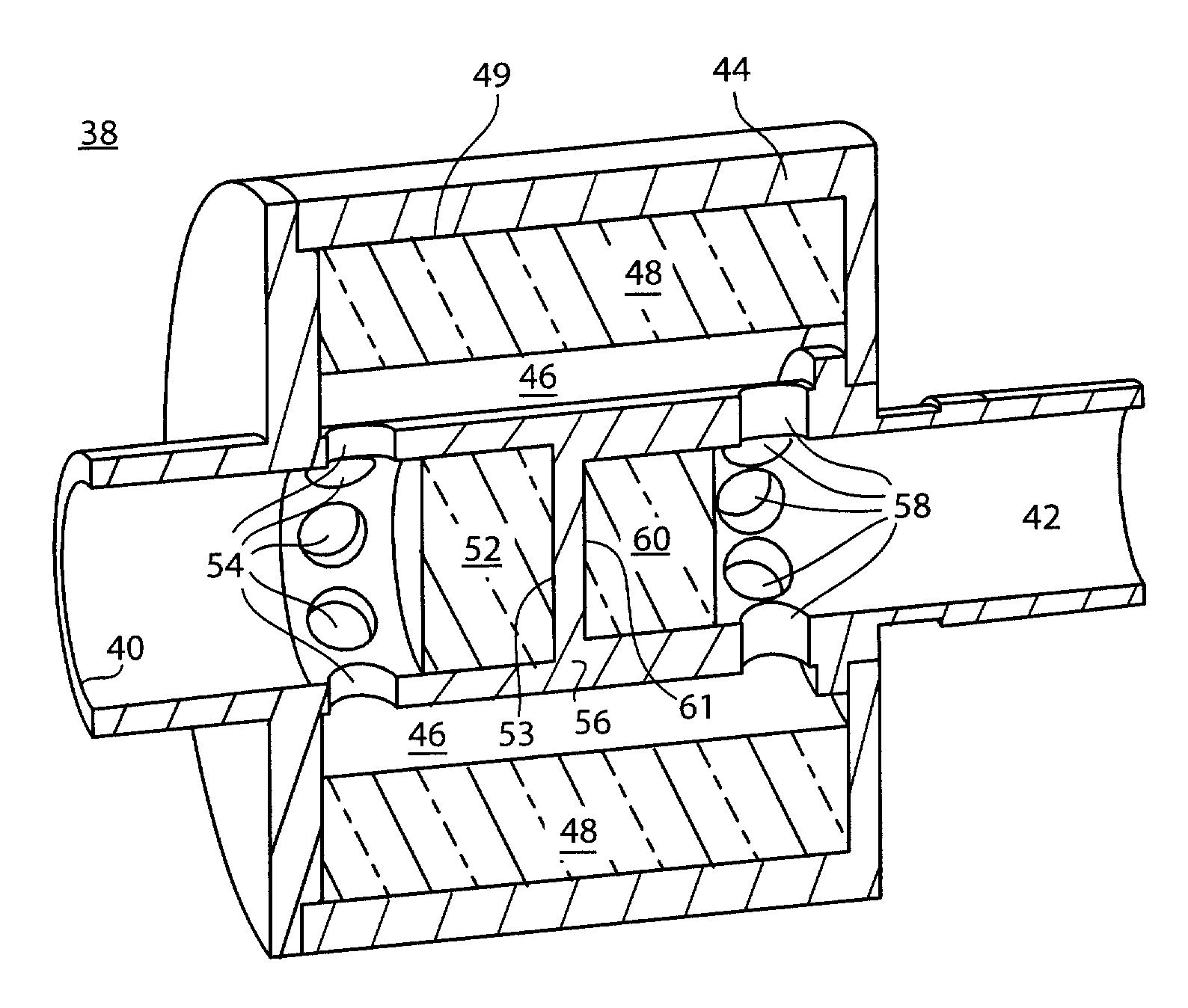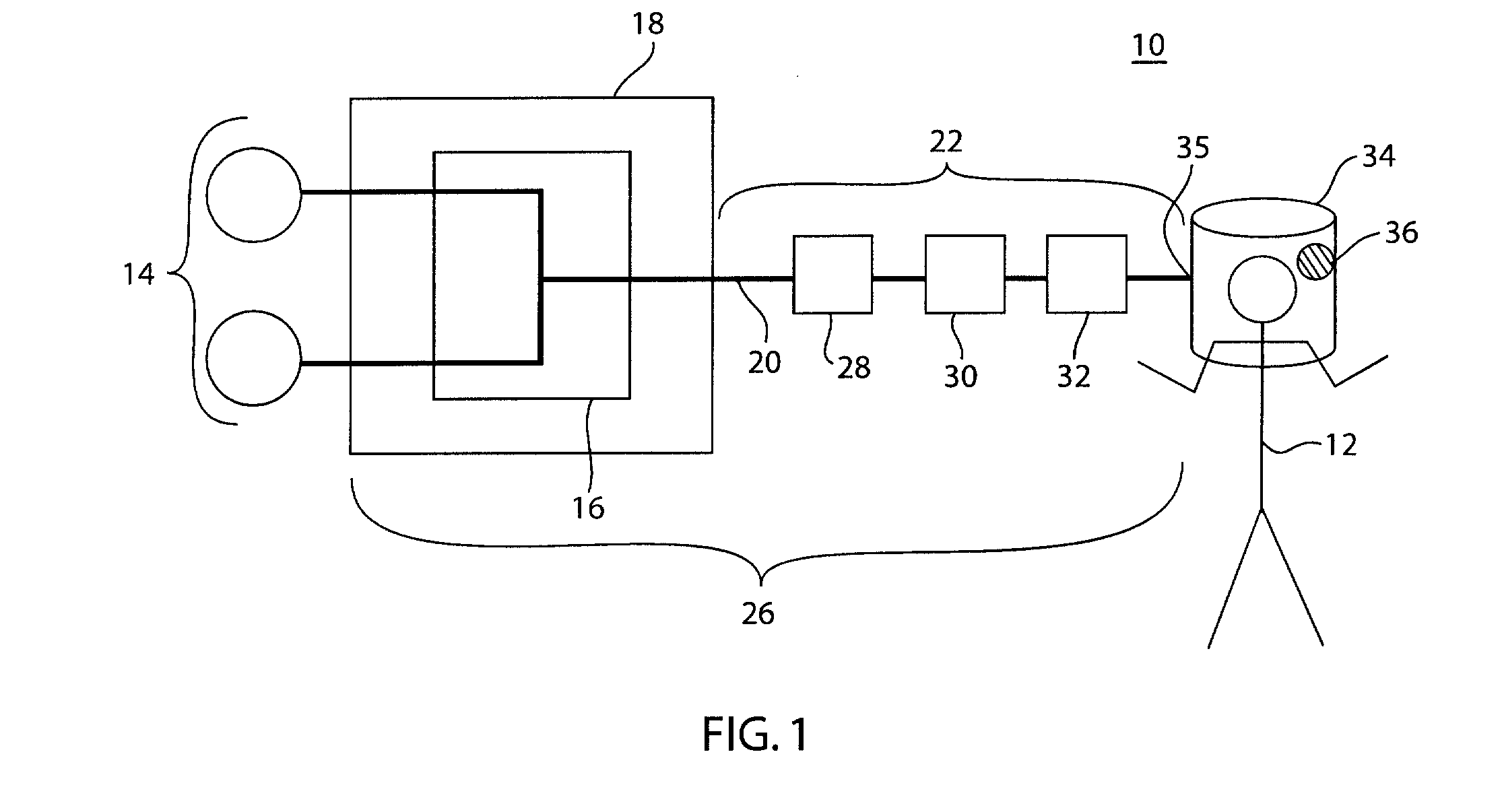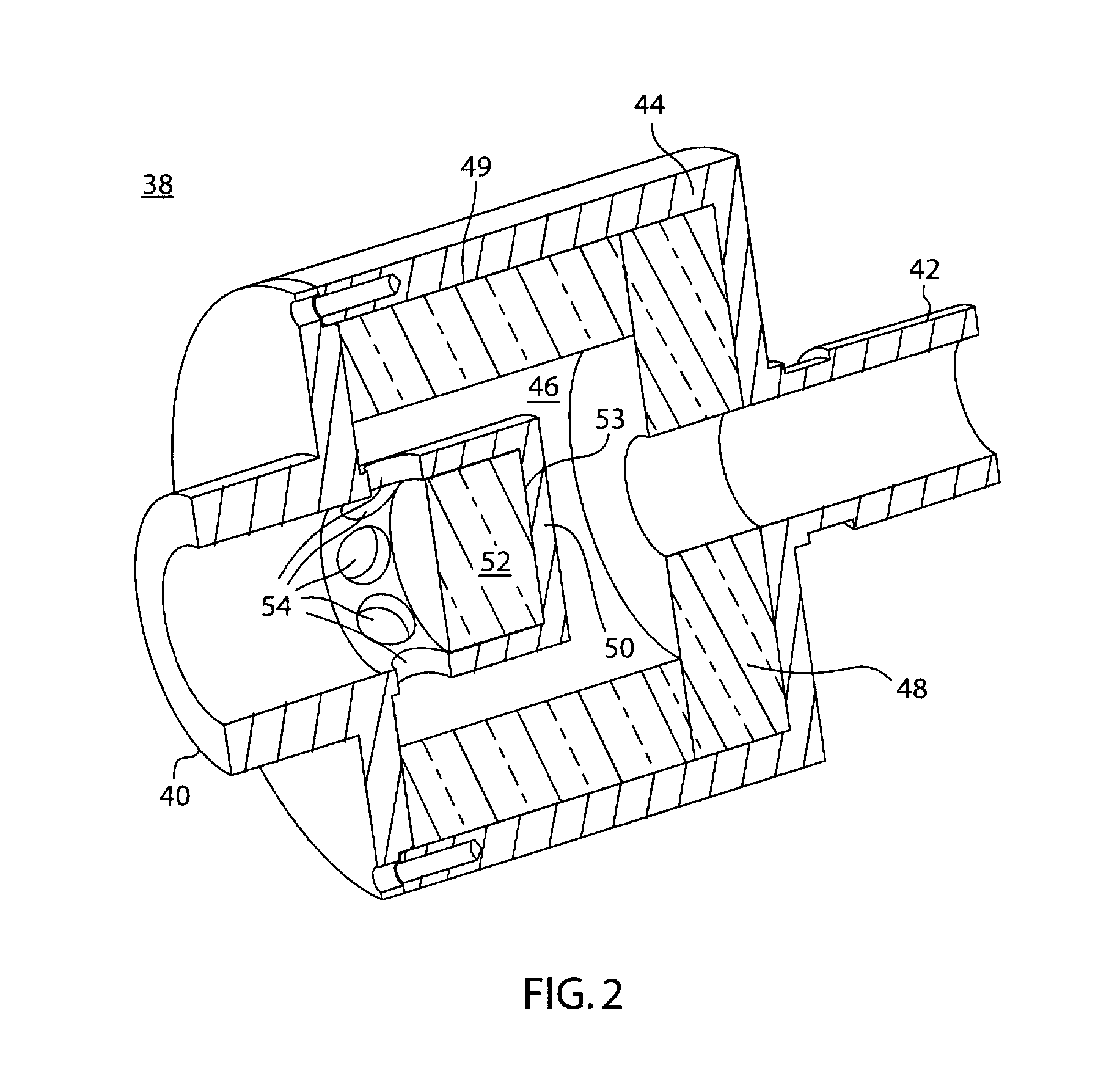Apparatus and system for reducing mechanical ventilator noise
a technology of mechanical ventilator and apparatus, which is applied in the direction of mechanical apparatus, valves, respirators, etc., can solve the problems of reducing the patient's communication ability, affecting the patient's ability to eat, and affecting the patient's ability to communica
- Summary
- Abstract
- Description
- Claims
- Application Information
AI Technical Summary
Benefits of technology
Problems solved by technology
Method used
Image
Examples
Embodiment Construction
[0019]FIG. 1 depicts a schematic diagram of a mechanical ventilation system 10 for providing respiratory support to a patient 12. The system 10 comprises a series of pneumatic conduits and modules 26 that form a pneumatic connection between a medical gas source 14 and the patient 12. The medical gas source 14 is connected to a manifold 16 of a mechanical ventilator 18. The manifold 16 serves to combine the constituent gases that are provided from the medical gas source 14 into the desired medical gas that is to be delivered to the patient 12. Alternatively, the mechanical ventilator 18 may be replaced by an alternative device for controlling the flow of medical gas. This alternative device may comprise a CPAP device connected to the source of medical gas or a manually operated ventilation bag.
[0020]The term “medical gas” as used in this application refers to any gas or combination of gases that is delivered to a patient in a clinical setting. Most commonly, the medical gas delivered...
PUM
 Login to View More
Login to View More Abstract
Description
Claims
Application Information
 Login to View More
Login to View More - R&D
- Intellectual Property
- Life Sciences
- Materials
- Tech Scout
- Unparalleled Data Quality
- Higher Quality Content
- 60% Fewer Hallucinations
Browse by: Latest US Patents, China's latest patents, Technical Efficacy Thesaurus, Application Domain, Technology Topic, Popular Technical Reports.
© 2025 PatSnap. All rights reserved.Legal|Privacy policy|Modern Slavery Act Transparency Statement|Sitemap|About US| Contact US: help@patsnap.com



